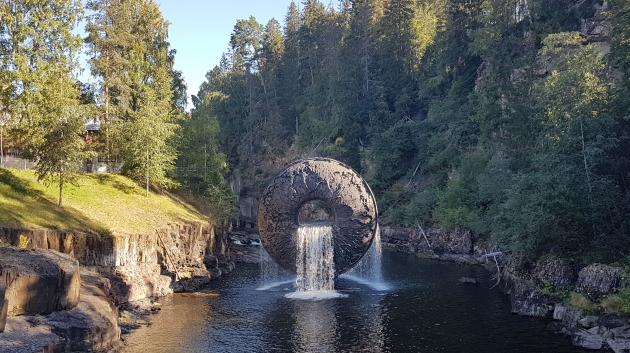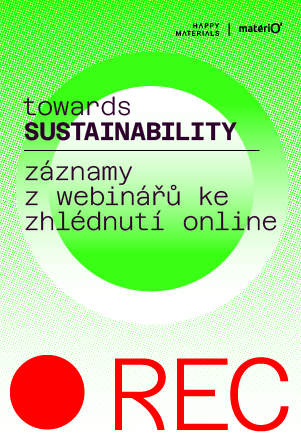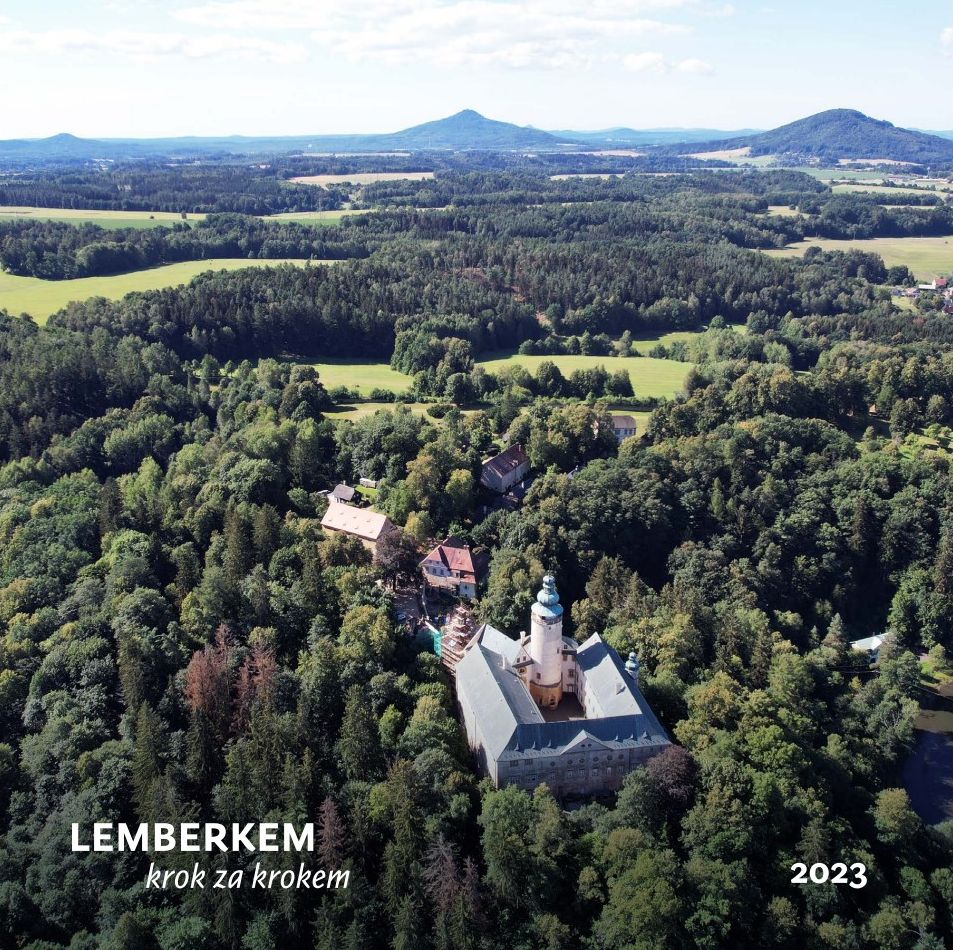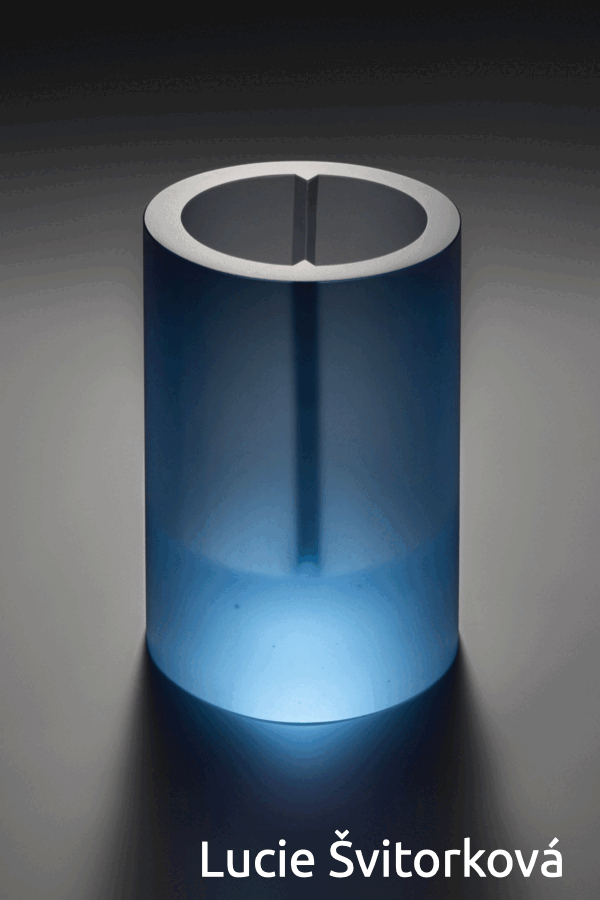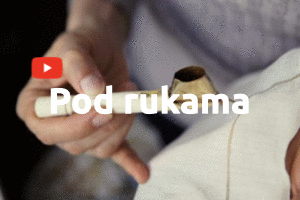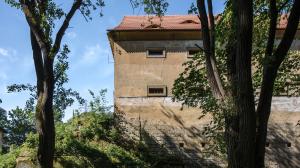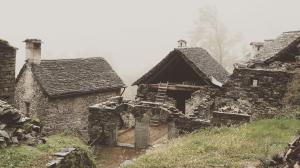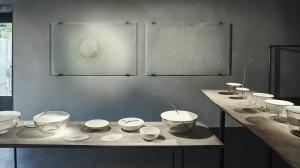OUR FOCUS
Kistefos – Scandinavian Experience
Kistefos Museum blends an industrial monument with world-class architecture, contemporary art exhibitions, and a picturesque sculpture park in spectacular countryside. We are grateful to this valuable institution´s management for their offer to become partners of our Lemberk Granary project and share with us their expertise. In early September, our team set off for Norway.
Marc Quinn: All of Nature Flows Through Us (2011)
Text and photos: Simona Martínková • Translation: Pat Vlachová/VerbumPRO • Drawings: David Vávra
One of the most fascinating Sand charming contemporary art locations in Europe and perhaps even worldwide is in Jevnaker, about seventy kilometres from Oslo. Originally a historic pulp mill, the complex now features an industrial museum, world-class architecture, two contemporary art galleries, and an impressive sculpture park.
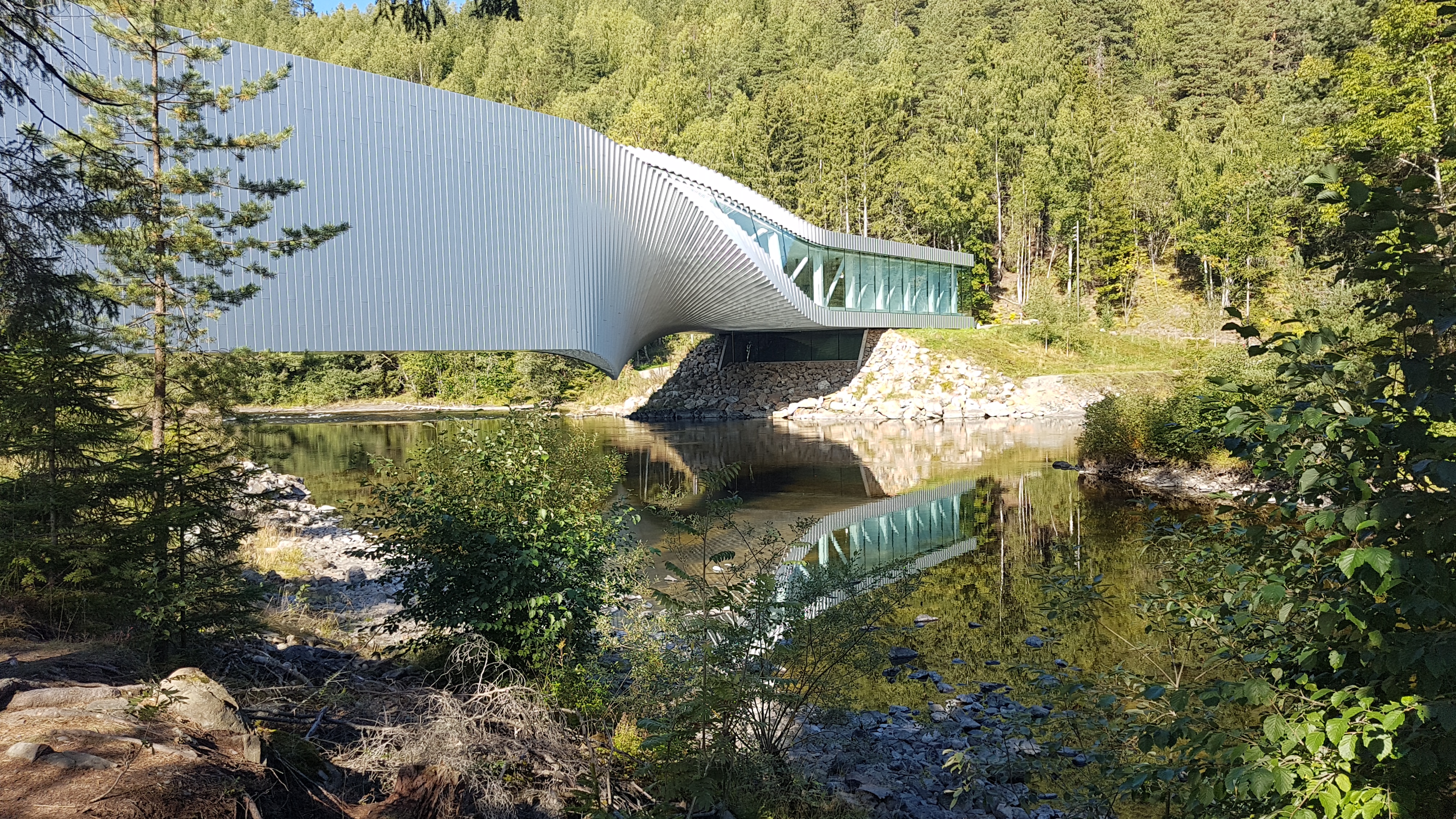
Twist is a gallery, a bridge, and a sculpture in one. The 1000 square meter building twists into a sculptural form and spans 60 meters across the Randselva river. The building was designed by the Danish top architects BIG - Bjarke Ingels Group and has already won several awards. As a gallery, it offers a unique exhibition space with a variety of light sources and views of the river. It also serves as a bridge to connect the northern and southern parts of the site into a single visitor circle.
Industrial roots
The site's history begins more than a hundred years ago when Consul Anders Sveaas, in 1889, founded a pulp mill company here which he named AS Kistefos Træsliberi. When production stopped in 1955, most of the machinery and equipment remained intact. Thanks to that, the mill was later turned into a museum in which visitors can see the production process live in The Living Factory area.
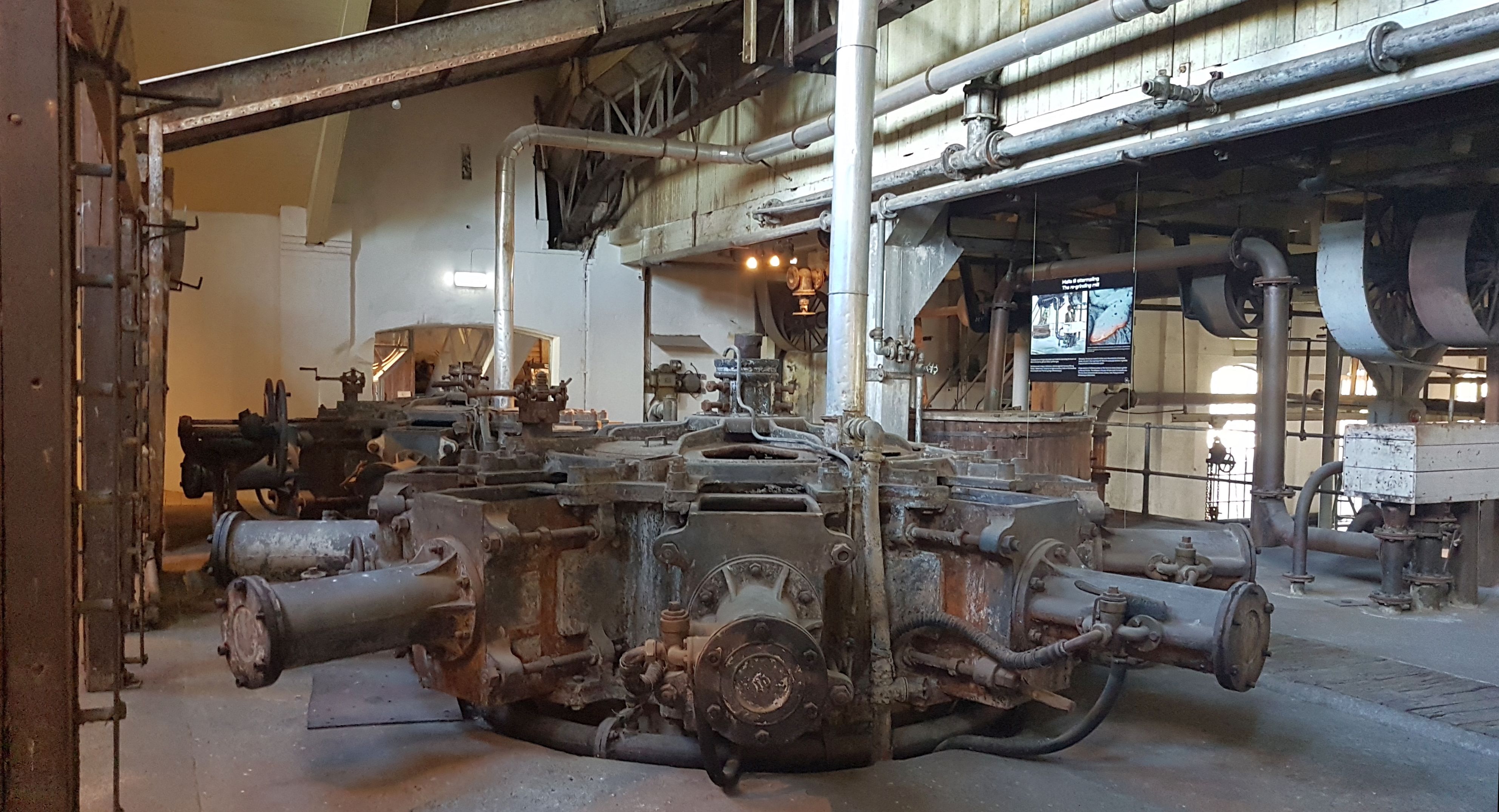
In Scandinavia, many pulp mills were powered by waterfalls, including about a hundred units in Norway alone. The Industrial Museum in the production premises of A/S Kistefos Træsliberi is the only one in which the owners managed to preserve both the structures and production equipment. Kistefos therefore tells a story of industrial history that is unique in both Norwegian and Scandinavian contexts – it pays tribute to the first period of industrialised modern Norway.
The Kistefos Museum, as we know it today, was founded in 1996 by Christen Sveaas, a Norwegian art dealer, collector, and Anders' grandson. The industrial history is the running theme throughout the park and is inextricably linked to Kistefos´ history. The river Randselva runs through the entire area and was in the early days the very foundation for the industry at the site. The river is a beautiful and calming element in the entire area.
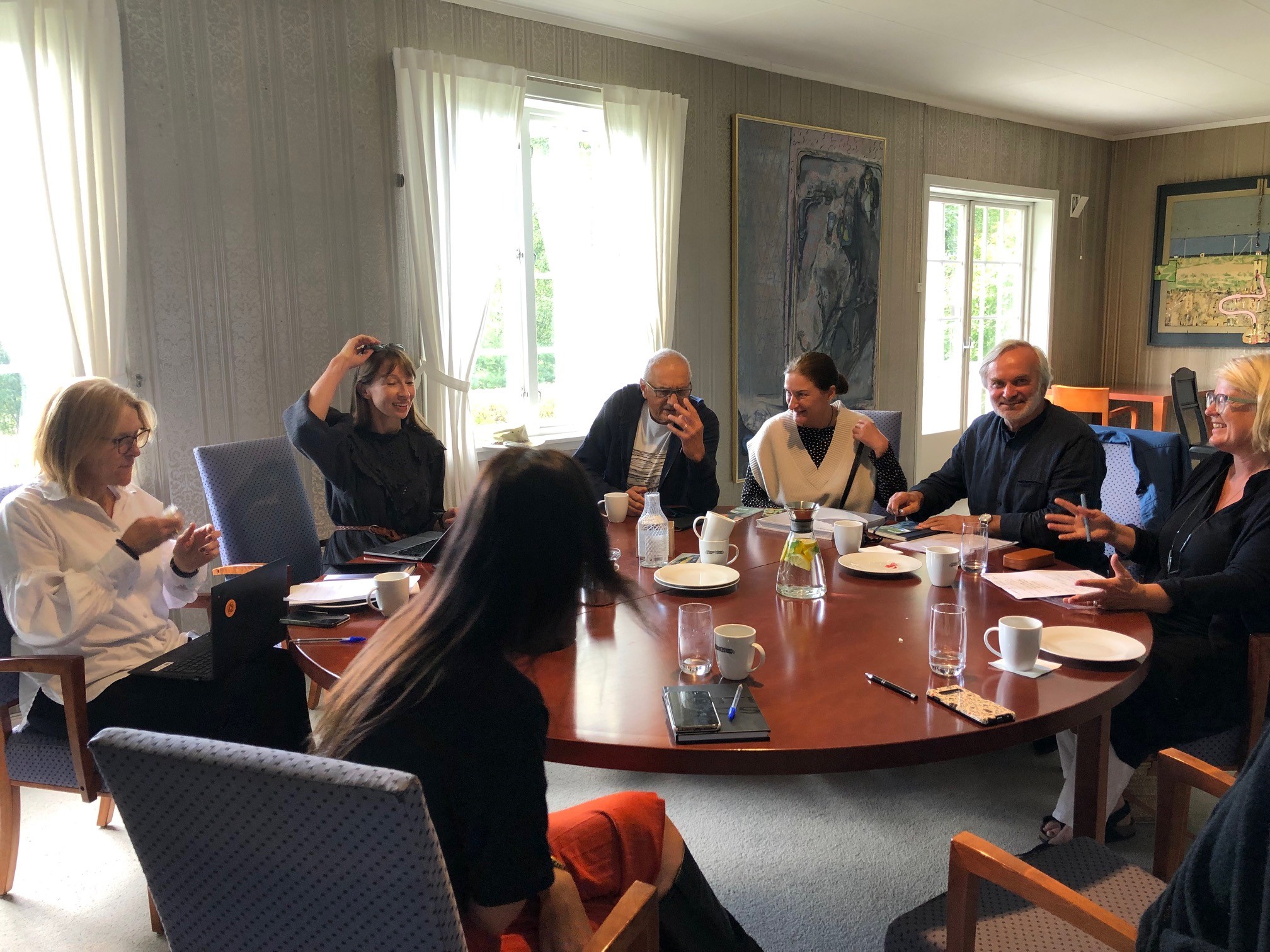
The main topics that arose from the meeting with the Kistefos Museum team - and will serve as inspiration for the Lemberk Granary – are, above all, preservation of cultural heritage and history in the site, revitalisation of the site with the help of top-rated architects who can accommodate its current purpose, and organisation of cultural events - live art, exhibitions, and site-specific events.
The wooden structure of a pulp mill as The Living Factory
Thanks to our visit to the oldest pulp mill in Kistefos, we now have an insight into the working process in the factory and we can imagine how people lived and worked there. The main task of the exhibition is to allow visitors to travel back in time and revisit the times when the most important raw materials came from the forest and wood was brought to the factory by river using a log conveyor system. In The Living Factory, visitors can start and operate old machinery and industrial equipment which have been brought back to life. Since 2017, the Museum has been offering a special programme for children. In the exhibition zones, visitors can make use of digital and interactive solutions that will certainly engage both young and old. And – as we are at Kistefos - the industrial museum is made even more interesting with installations by contemporary artists.
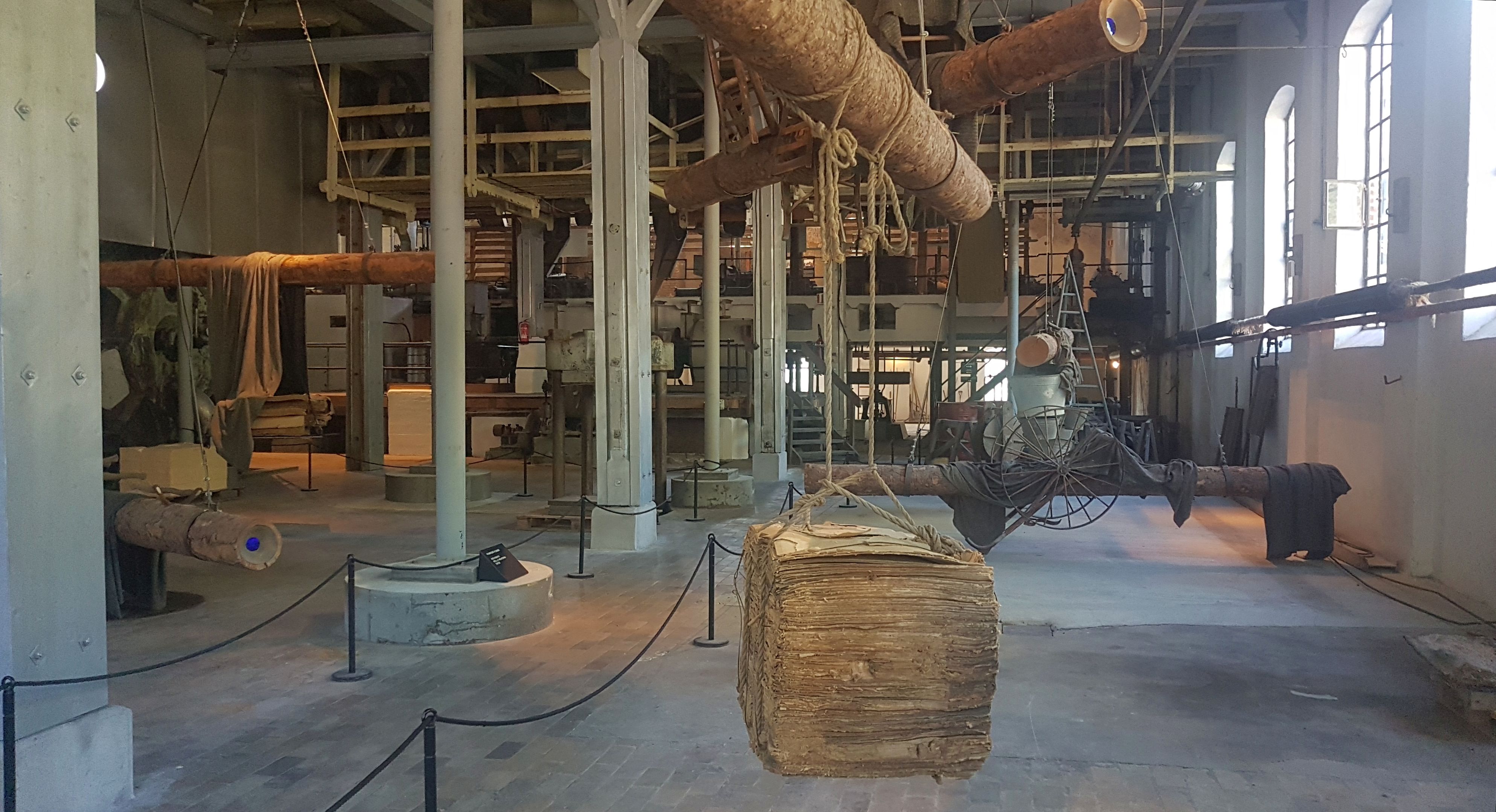
Fabrizio Plessi, an Italian artist, visited Kistefos in 2001. His visit resulted in Movimenti della memoria installation - which translates as "Movements of Memory". It is located next to the large machines in the old production hall. It consists of nine rotating logs suspended from the ceiling and supported by strong steel wires. Inside the logs, there is blue light - a symbol of the river and the waterfall that was the very basis of life in the local industrial period. Attached to the logs, there are tools and furniture from the workers' housing on the factory grounds.
There is also an interactive and dramatic video projection based on Baroque ceiling paintings called The Horse by Kristin Günther or an installation made from an aircraft engine called Sternmotor: Hochamt by Thomas Bayrle. In the installation, the engine sound is replaced by the sound of chants and rosary beads used in Catholic rosary prayers.
Sculpture Park
Visitors to Kistefos should not miss the sculpture park which is open even off-season. It is an unforgettable experience to keep discovering sculptures as surprising elements in the natural environment. Sculptures change their looks and character following the changing surroundings. Kistefos Sculpture Park features an impressive collection of works by internationally acclaimed contemporary artists including Yayoi Kusama, Tony Cragg, Claes Oldenburg, Anish Kapoor, Olafur Eliasson, Fernand Botter, and Elmgreen & Dragset. Each year one or more additional sculptures are added; currently, there are fifty-one of them.
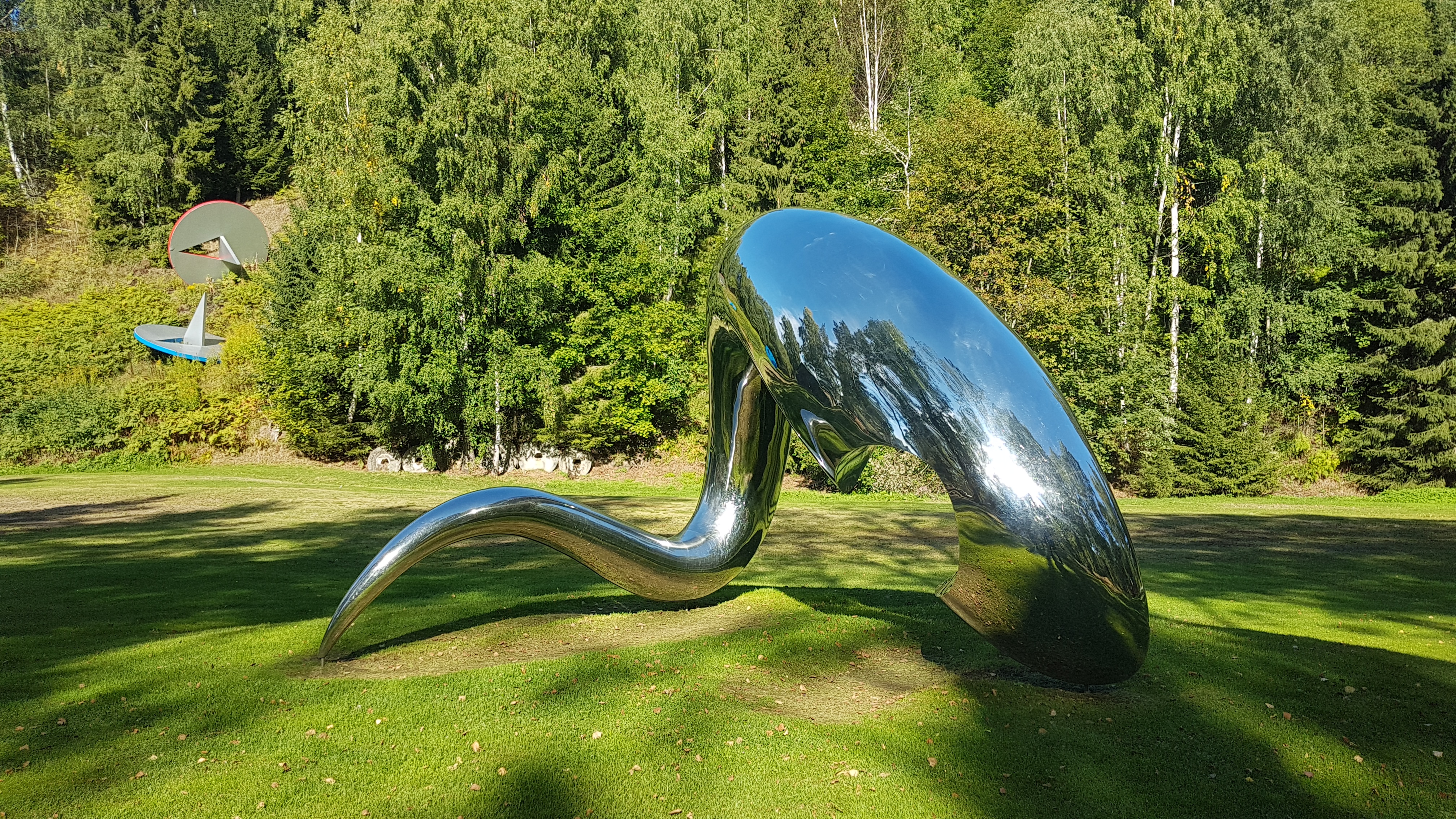
Tony Cragg. I´m Alive
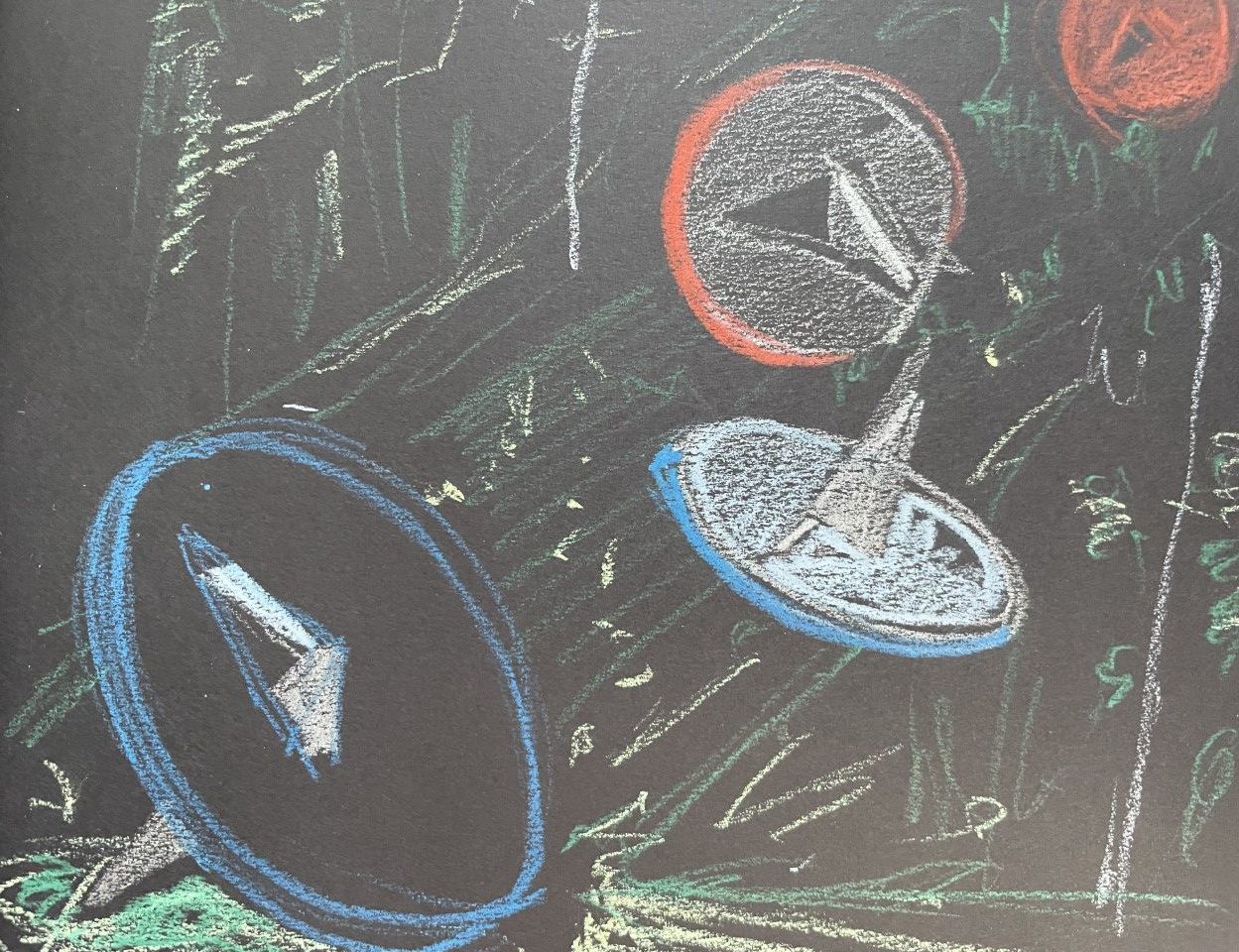
Oldenburg a van Bruggen: Tumblings Tacks
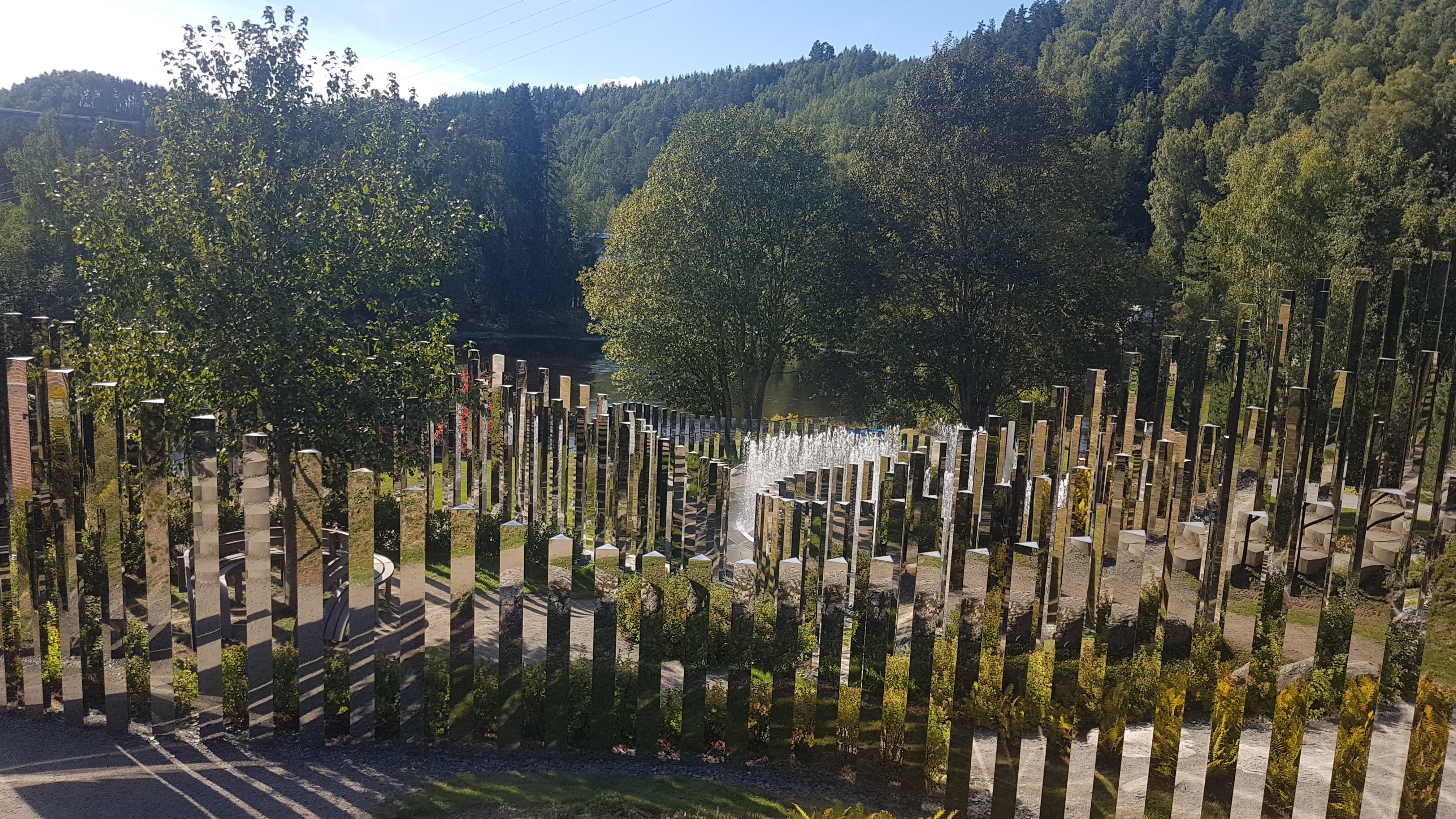
Jeppe Hein: Path of Silence
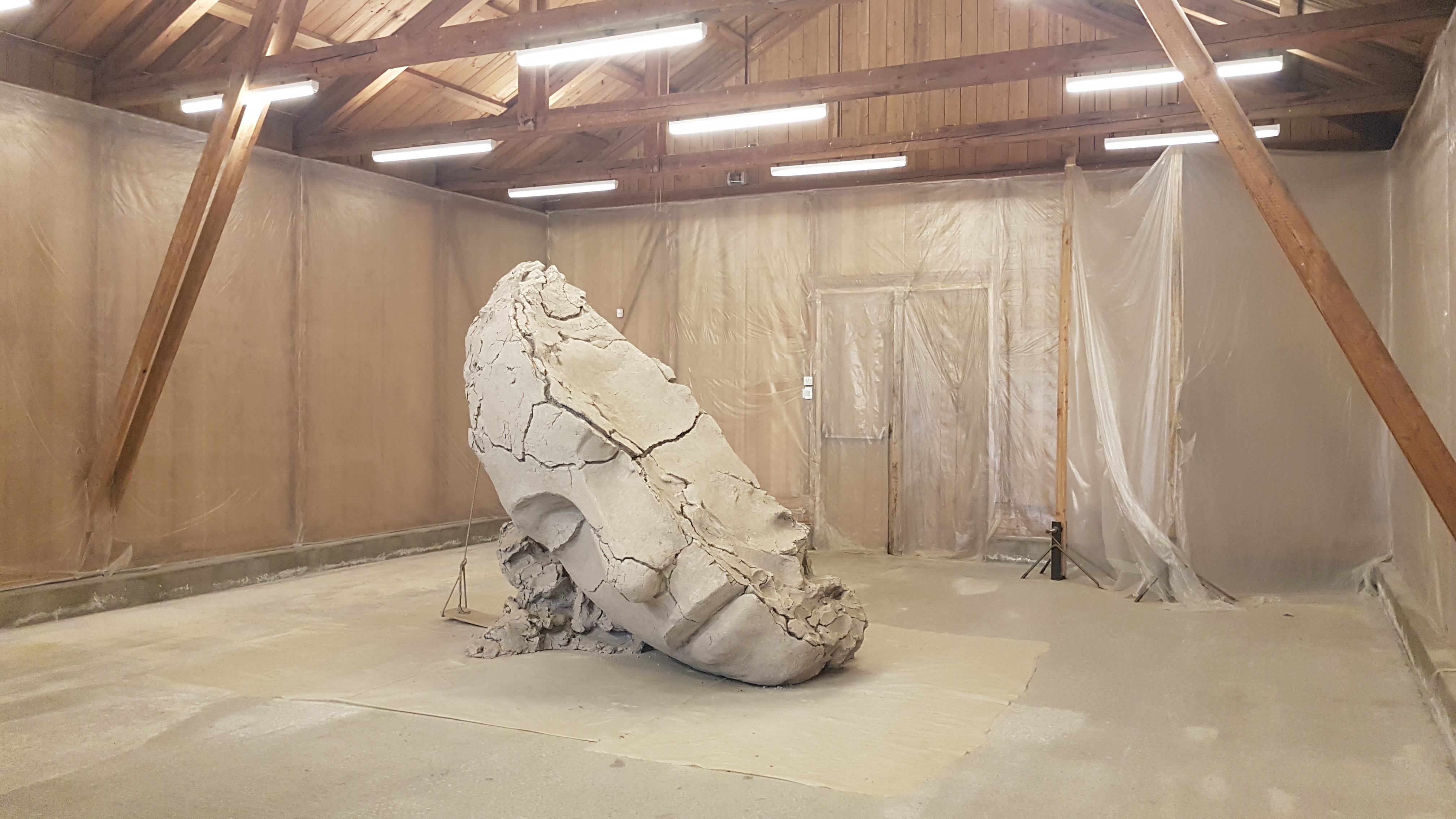
Mark Manders: Silent Studio
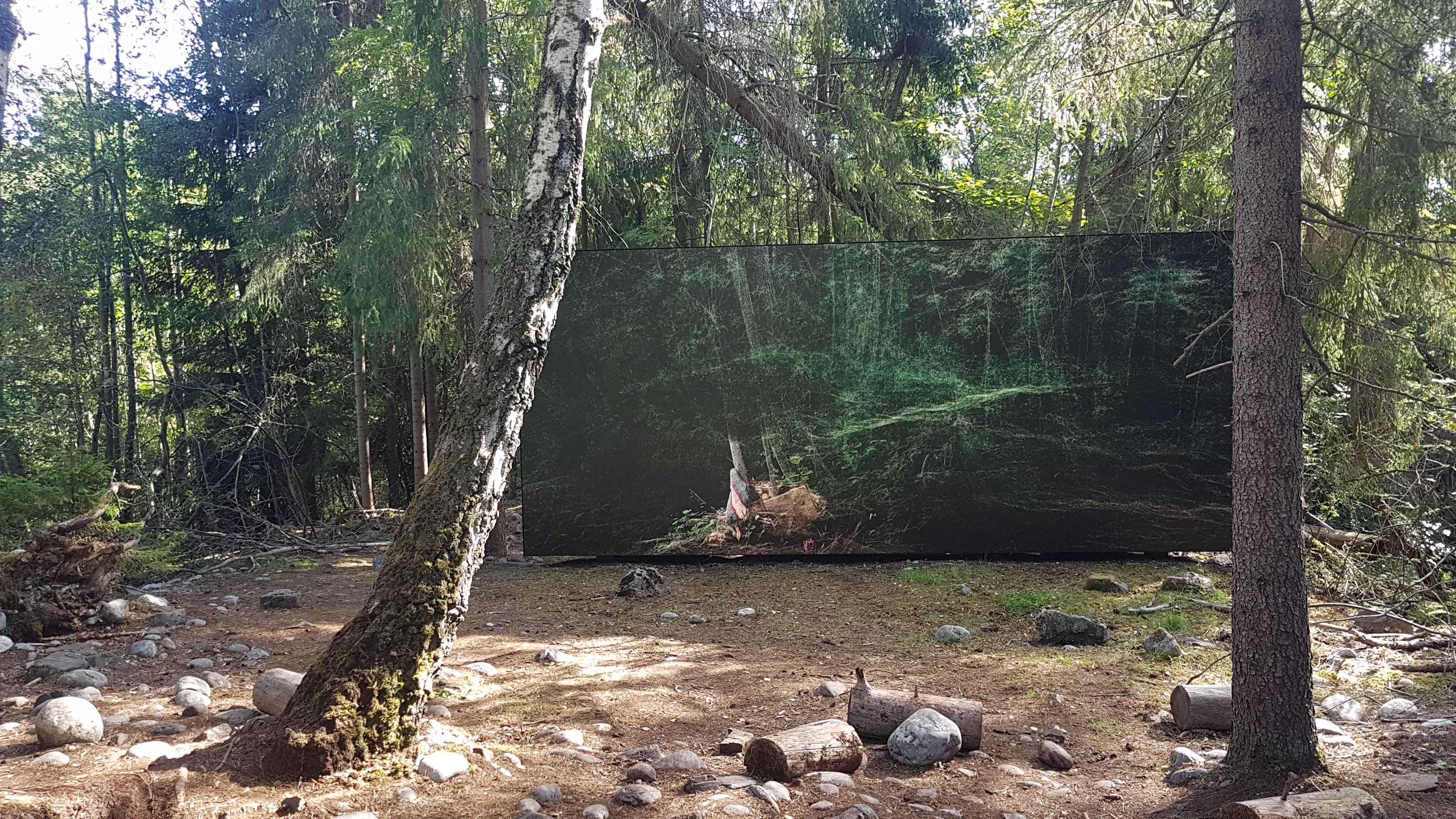
Pierre Huyghe: Variants
The park was built gradually in three phases. In the first years after the opening of the museum in 1999, the curators were adding mainly sculptures by Norwegian contemporary artists. After a few years, the park started winning international attention as the curators kept unveiling works by well-known international artists. Since 2005, site-specific works have been revealed one after another reflecting on the beautiful area around Kistefos; themes often include water, energy, industry, and nature. For the sculpture collection, see https://www.kistefosmuseum.com/sculptures
Twist – architecture, a sculpture, a gallery, and a bridge
The Twist Gallery is a unique exhibition space with varied light sources and views of the Randselva River designed by architects from the Bjarke Ingels Group (BIG). The 1000 square meter conceptual building twists into a sculptural form and spans 60 meters across the Randselva river like a bridge.
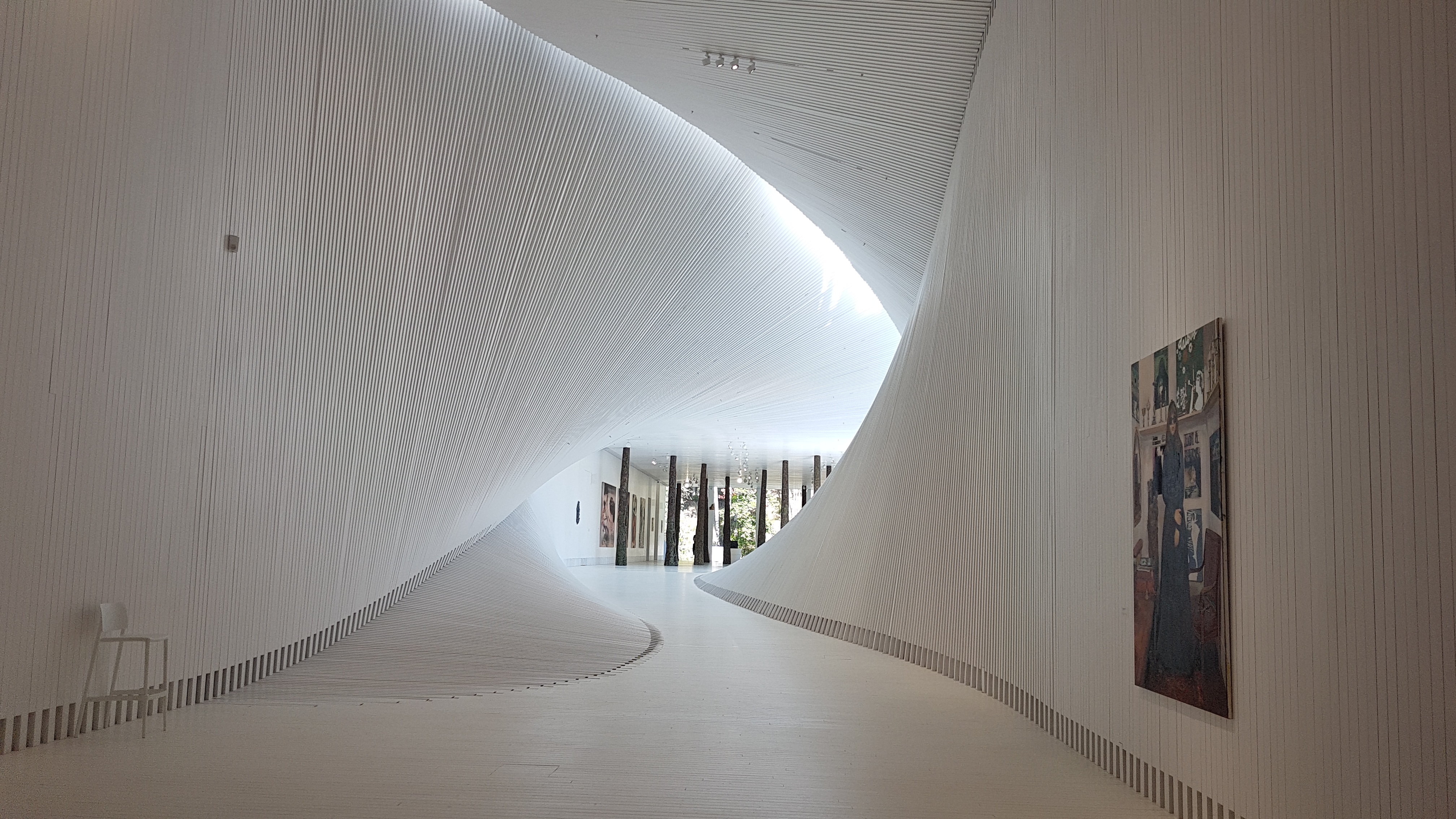
The Twist has three showrooms; Closed Gallery, Twist Gallery, and Panorama Gallery. From the south side of the river, visitors enter through a dramatic double-height space into the Closed Gallery, with clear sightlines through the entire building to the north entrance.
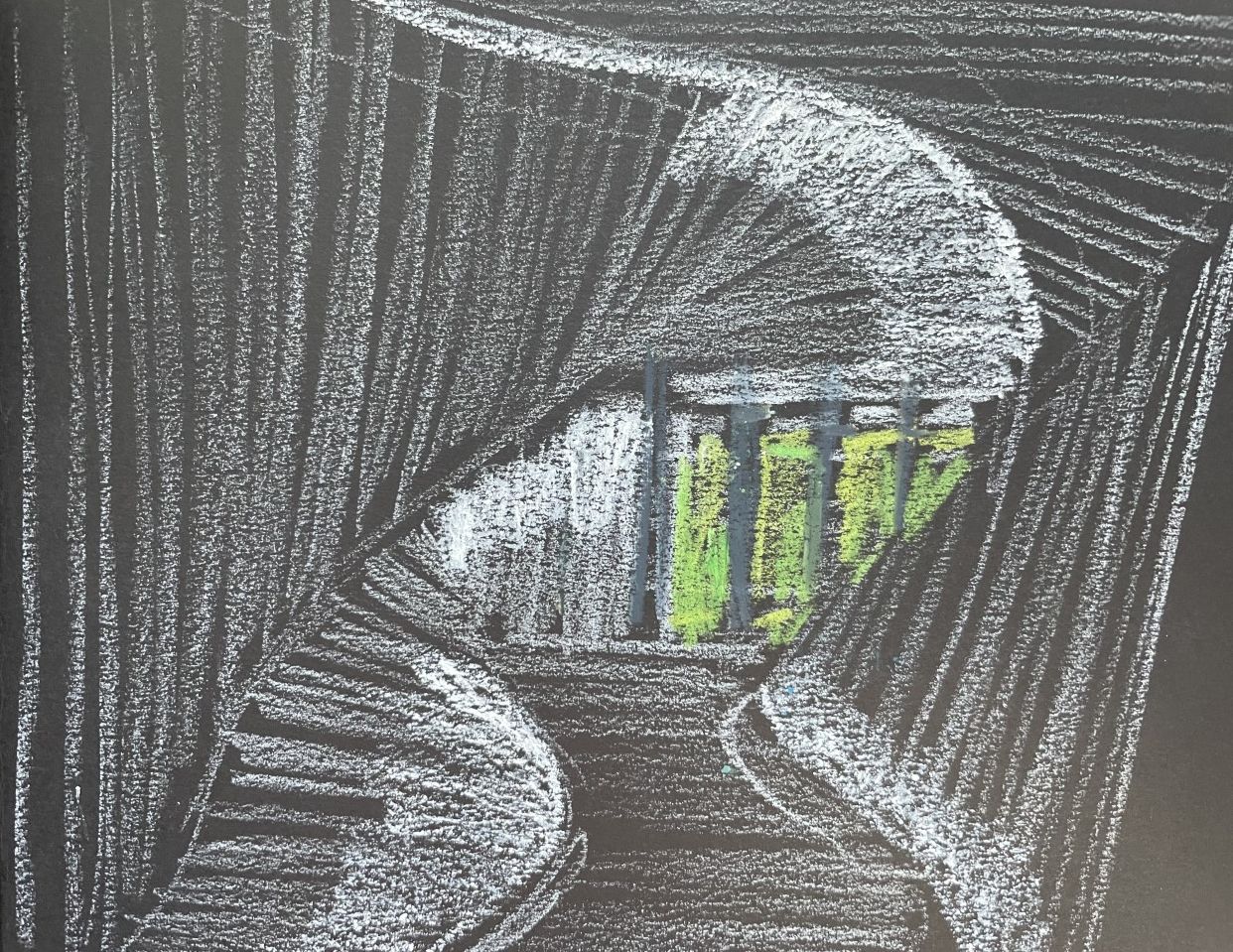
The Twist Gallery is, as its name suggests, the interior of the twist itself. In this section, ceilings become walls and walls turn into ceilings when the building turns 90 degrees.
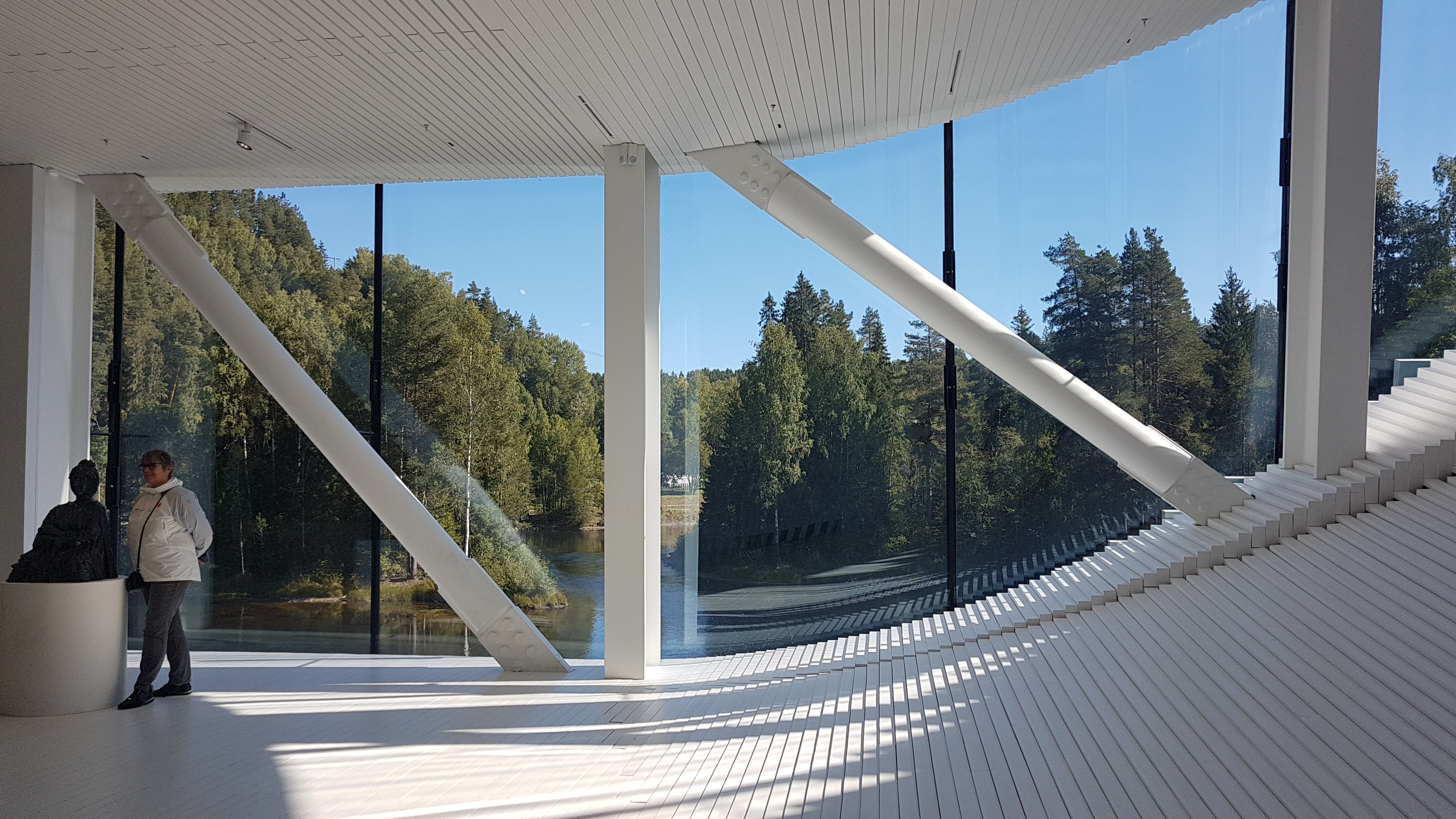
From the north end of the building, visitors enter the Panorama Gallery. Its large windows offer a view of the river and the surrounding landscape.
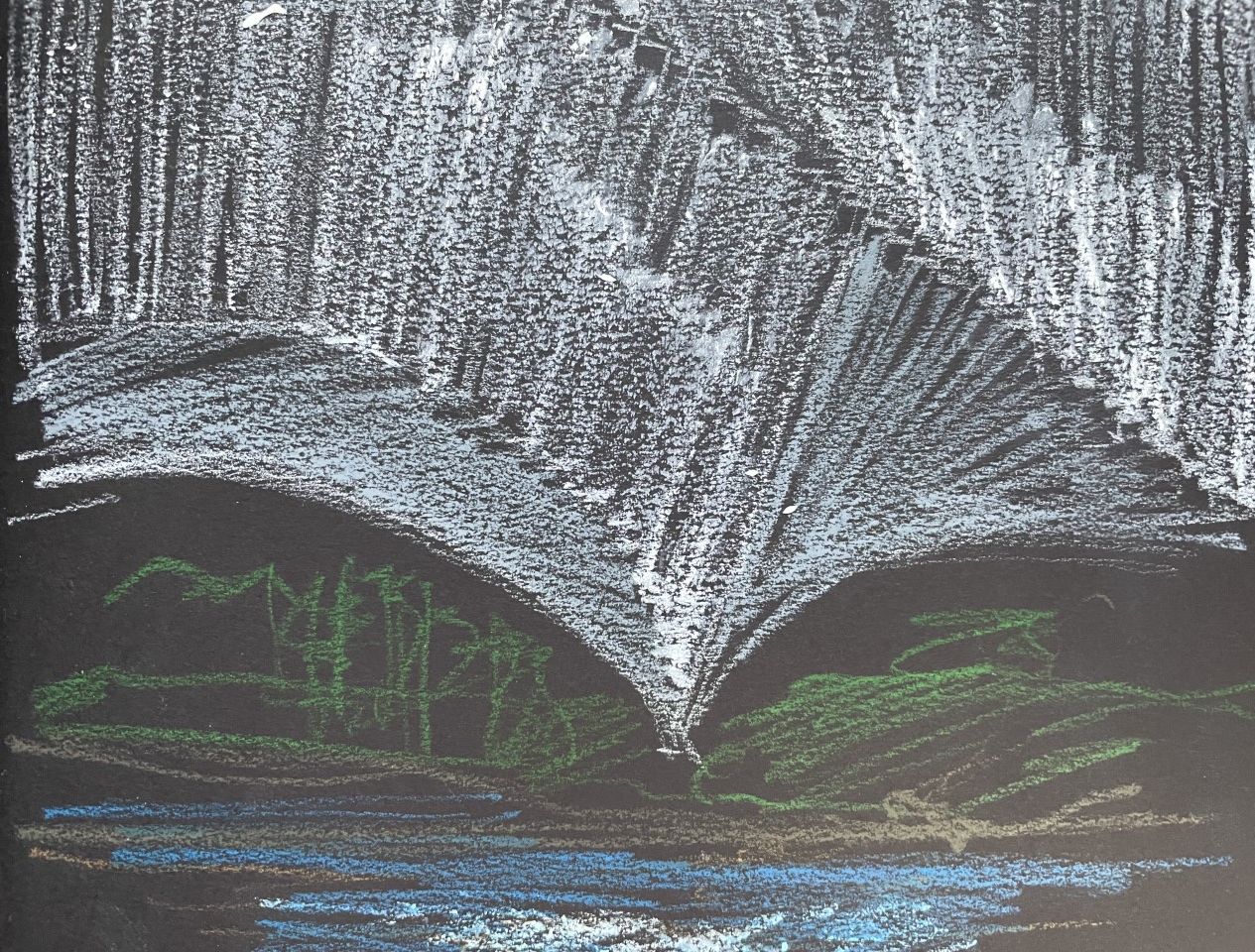
An illusion of curves - contrary to what the eye perceives, The Twist consists only of straight lines. The long aluminum and wood panels are twisted as in a deck of cards to form a fan shape.
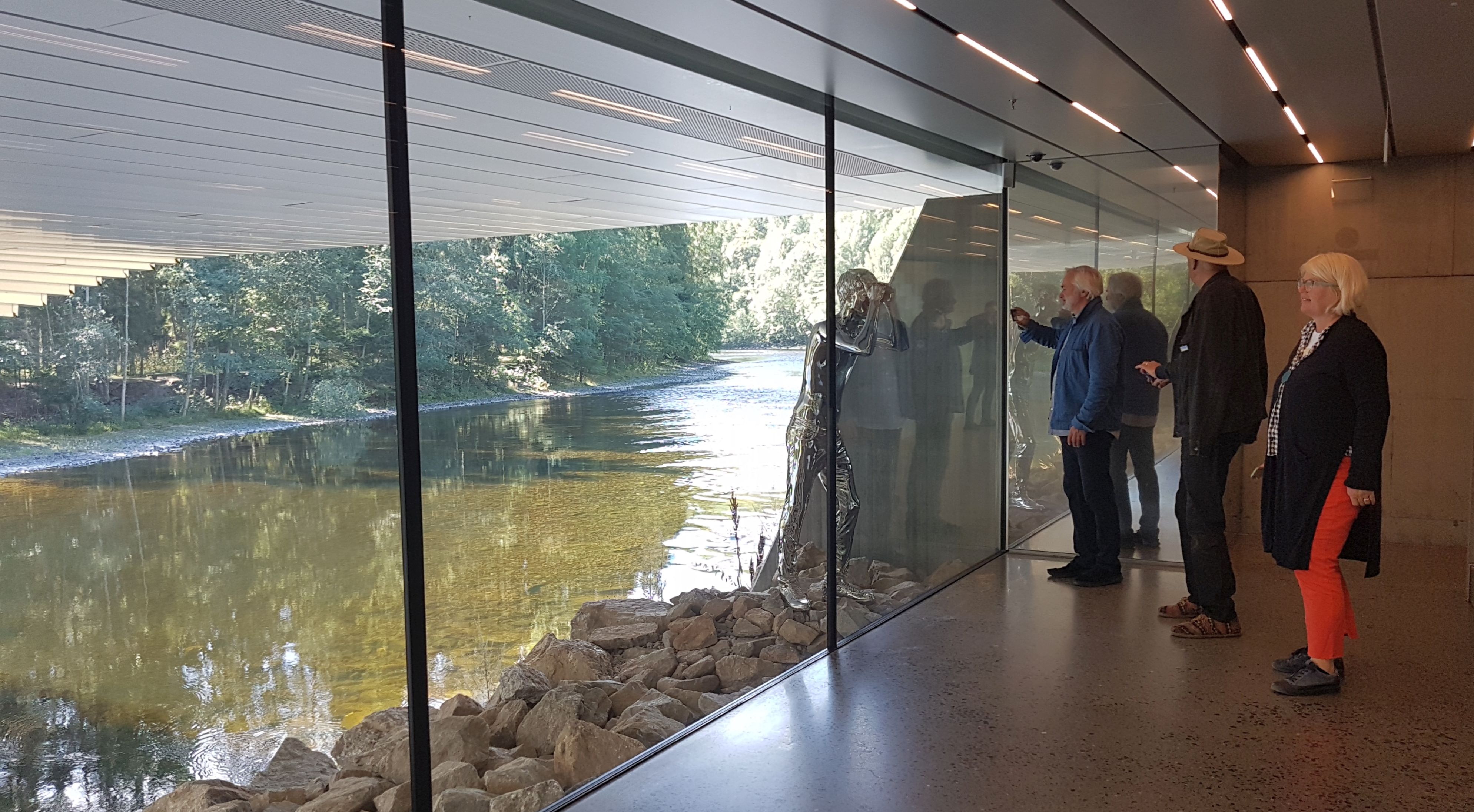
Down under - A glass staircase leads down to the museum's lower level on the northern riverbank. The full-height glass wall brings the river below close and enhances the experience of being in the middle of nature.
Contemporary art exhibitions
Every year, Kistefos presents new art exhibitions by highly recognized Norweigan as well as international artists in two galleries - The Twist and Nybruket Gallery. The Nybruket Gallery is located in one of the old factory buildings built in 1896. It is an excellent space for contemporary art. When we visited Kistefos, the gallery was presenting the work of the prominent South Korean artist Do Ho Suh.
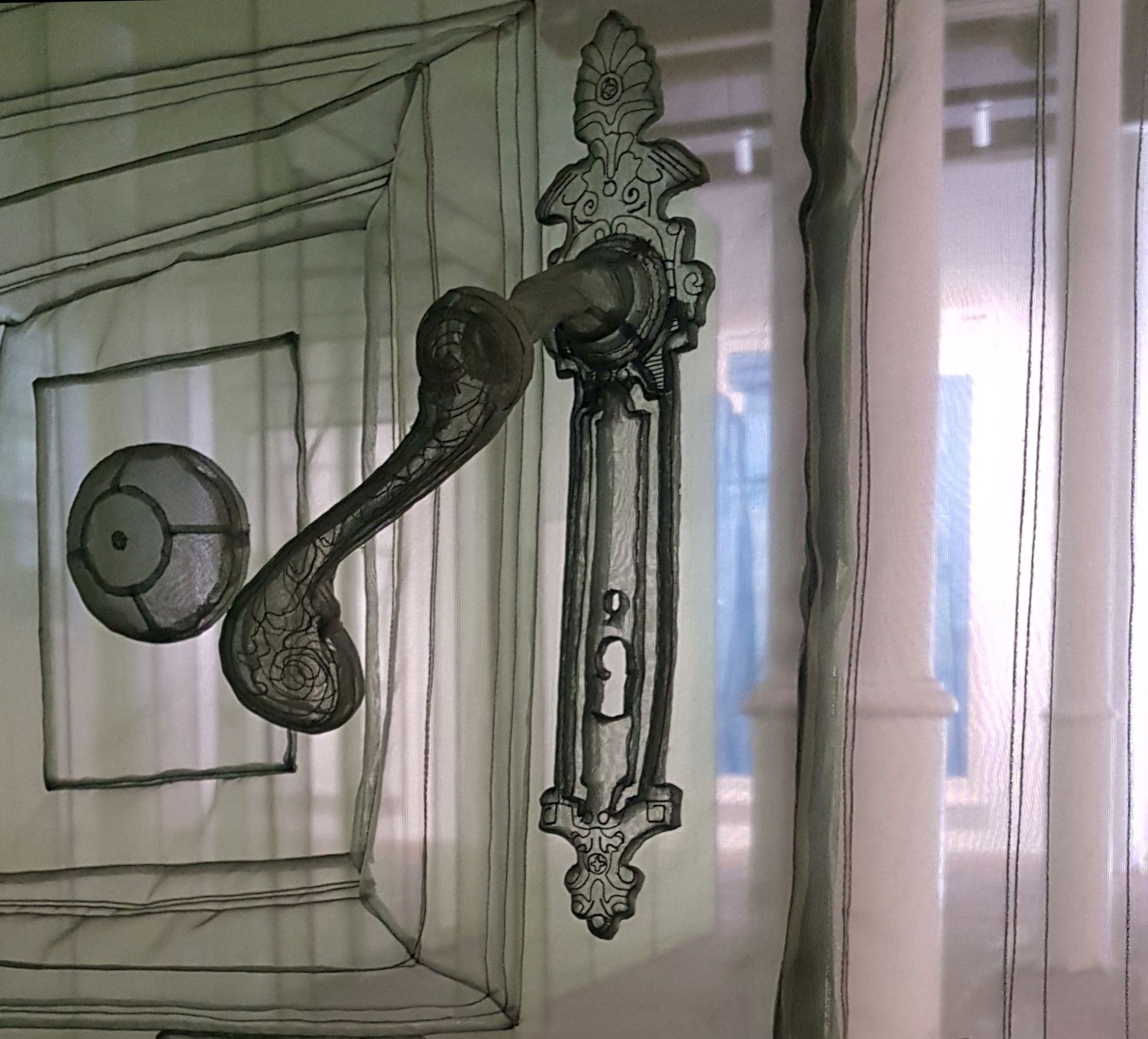
Detail - Installation of the artist's life-size color series of rooms, along with a movie and large-scale wall art pieces.
Her Hauntology at Twist Gallery is Paulina Olowska's (b. 1976, Gdansk, Poland) first major exhibition in Scandinavia. Her artwork includes painting, sculpture, installations, and performances. It presents a selection of the artist’s work to the present day, including major works from the Christen Sveaas Art Collection and the Christen Sveaas Art Foundation.
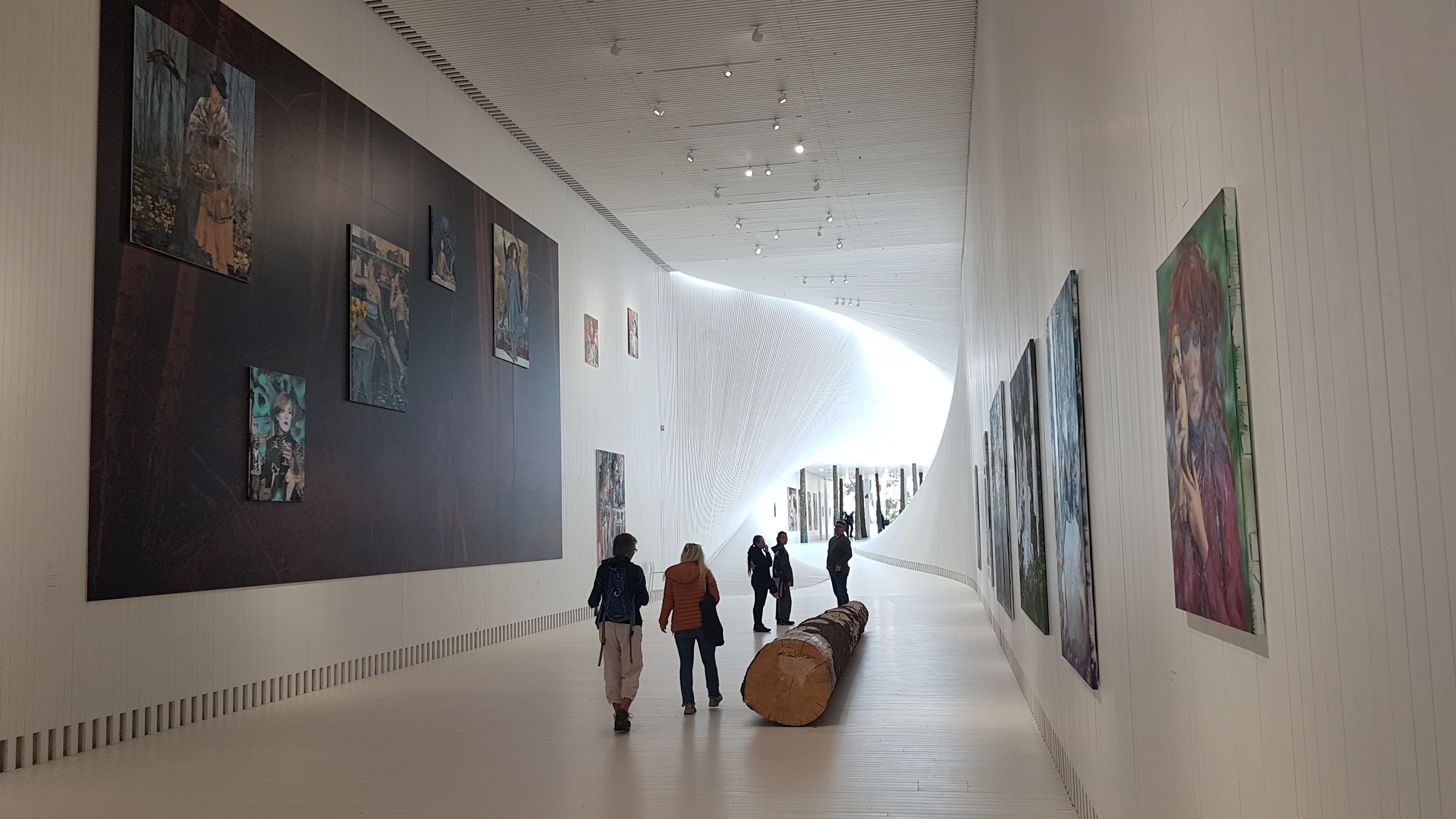
The key artist´s themes focus on Slavic culture, the female gaze, and Olowska's enduring interest in reinterpreting modernism.
Visiting the Kistefos Museum was a powerful experience for all of us. What did we like the most?
"The visit made me compare," says Lucie Havlová. "We´ve also been trying to figure out how to exhibit sculptures inside and around the granary in Lemberg. I figured that we´d never lay our hands on this budget and the land. The entrance fee at Kistefos is high enough to cover their costs. New sculptures are introduced each year by the patron, who is a descendant of the owners of the pulp mill. But that doesn't mean that we won't try to take the Lemberk Granary in a similar direction, even though differently. We will focus on Czech sculptors whom we like and who will help us organize and install the exhibitions. We will then keep one sculpture from each exhibition. Site-specific events will take place in the second phase. Now, we are using our own resources and grants while looking for donors and sponsors. Our project is smaller, but we have the advantage of a location in a cultural Baroque land, which is beautiful even without statues. Plus we already have Baroque sculptures and sculptures from sculpture symposia from the 1990s on site. Our interventions in this environment will necessarily be more humble and less spectacular, but we hope that we´ll enrich and inspire our visitors."
"The Kistefos Museum was a powerful experience for me, not only artistically, but in attitude, conduct, and overall atmosphere." says Tomáš Hendrych. "It is both a lesson for me and an inspiration for our project. I knew where I was going and what to expect to see and yet the visit itself exceeded my expectations. The biggest surprise was the Twist - a sculpture, a bridge, and a museum all in one. It's really so simple - but perfect at the same time. Not only the idea itself and its´ setting in nature, or the art and architecture, but also the use of materials and workmanship. If we show the same enthusiasm for our project and trust our idea as well as our instincts, we can succeed in creating a place for people to meet and revive the creative spirit of Lemberg."
"Kistefos, like all of Norway, knows how to share," adds David Vávra. "In the time of plenty, they don't think about proving their superiority, as great nations usually do, and their way of living doesn't change. They live the same lives in the same houses, their ambitions virtually unchanged, donating the surplus to cultural, educational, and many other projects. Because their happiness depends on the happiness of others, they keep supporting the development of other parts of Europe, including through generous Norwegian funds. Chapeau, well done."
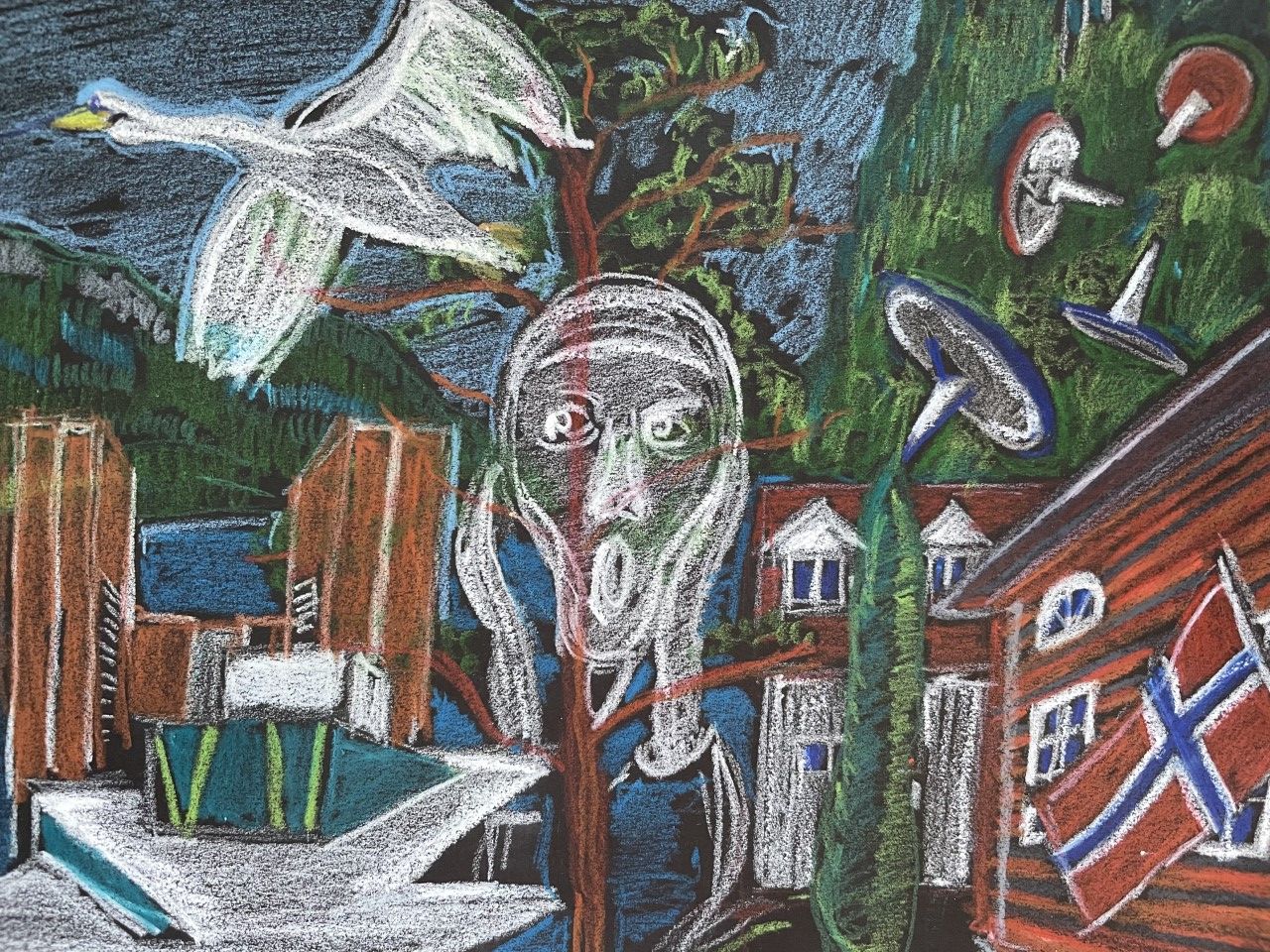
29. 9. 2022
LATEST COMMENTS
9. 4. 02:43
katana
katana - Marcos Garcia: Dancing on the new compost toilets is very important
9. 4. 02:42
katana
katana - Jan Lebl about Prameny, a municipality at the Czech German border, and civic activism in the rural areas
9. 4. 02:42
katana
katana - Fashion Designer Mai Trần: Vietnam is a Country of Sewing Machines
